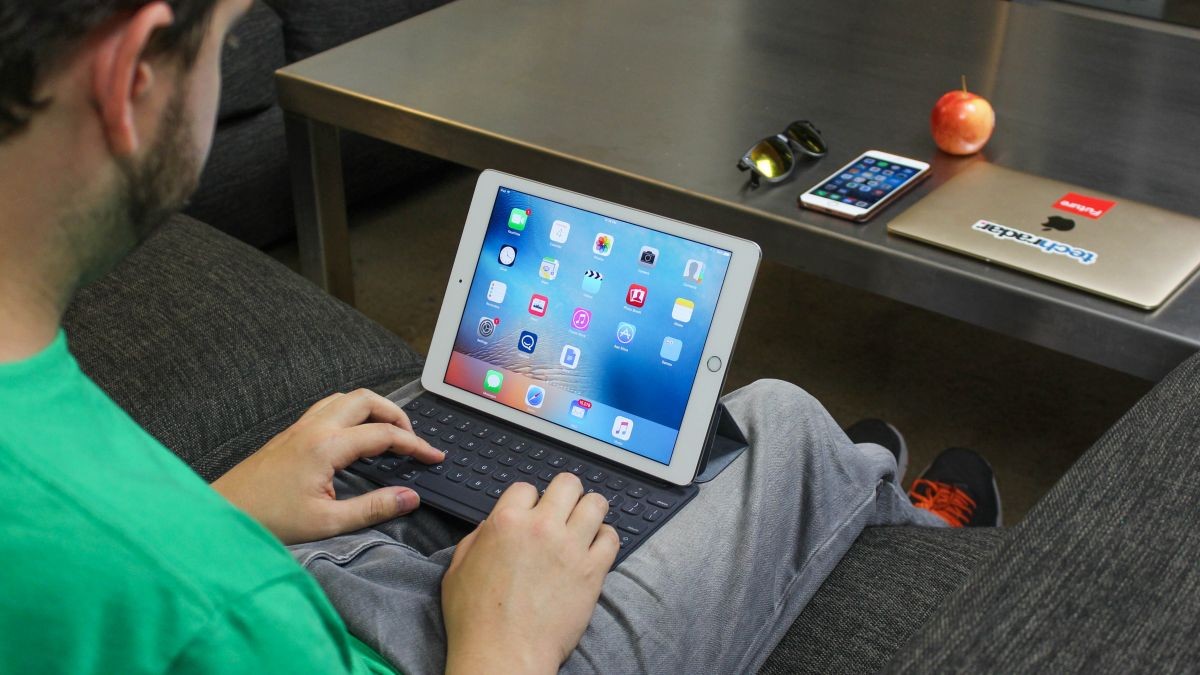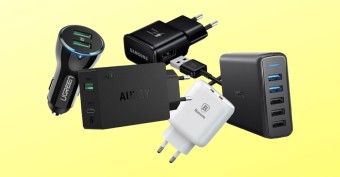Tablet as a PC: is it possible to fully work on iPad or Android?
We independently test the products and technologies that we recommend.

Which tablet to choose?
We can say one thing for sure: only a tablet with a screen diagonal of 10 inches or more can replace a desktop computer or laptop. Seven and eight-inch tablets are too far removed from modern six-inch smartphones - good for entertainment, but bad for work.
We also consider Windows tablets a dubious option. Managing classic Windows applications with small interface elements is inconvenient even with a stylus, not to mention fingers. And in general, the desktop OS runs extremely slowly on energy-efficient Intel Atom processors, and more productive Core M processors are expensive, heat up a lot and quickly consume battery power.
With Apple tablets, everything is more or less clear: there is the iPad 2017 (aka New iPad) gradually disappearing from sale, which replaced the iPad 2018 with a slightly more powerful processor and stylus support, and a couple of iPad Pro (10.5 and 12.9 inches) with more a more powerful processor, double the amount of RAM and a connector for a branded keyboard case.
 |
Theoretically, the iPad Pro is best suited for serious work, but if you are not one hundred percent sure whether the tablet in general and iOS in particular is right for you, it is better to buy a relatively inexpensive “probe” in the face of a regular iPad 2017/2018 with 32 GB of memory . This seemingly small volume is enough for mobile applications (only some games weigh relatively much), and most users still listen to music and video and watch mostly online.
Theoretically, the range of Android tablets is much more extensive, but in practice, the choice of truly functional devices is small. And all because manufacturers do not often update their lineup (there are still plenty of 2016 devices on sale). The most "fresh" of the relatively inexpensive Android tablets is Lenovo Tab 4 10 Plus 64 GB . It has 4 GB of RAM and 64 GB of flash memory, plus a microSD card slot. The processor is not a flagship, but quite a smart eight-core Qualcomm Snapdragon 625. And if you are looking for something cheaper, then take a closer look at Asus ZenPad 10 32 GB and Huawei MediaPad M3 Lite 10 32 GB which have 3 GB of RAM.
 |
Another interesting option are tablets with two operating systems at the same time: Windows + Android. They are mainly produced by second-tier Chinese companies, such as Chuwi. This approach allows you to conveniently control Android applications with your fingers, and if necessary, work with highly specialized software - temporarily switch to Windows.
What accessories are needed?
Together with the tablet, we strongly recommend purchasing a case. Moreover, it is important that he performs not only a protective function, but also knows how to fix the tablet in two positions - watching videos and printing text. For example, Ozaki cases can do this. Optionally, you can buy a protective film or glass, but they reduce the sensitivity of the touch screen, which makes it a little more difficult to select text and draw.
Additionally, you may need a stylus. Passive is not much more accurate than finger control, but it significantly reduces hand fatigue. The active stylus is much more accurate, but only supported by a small number of tablets (iPad 2018, iPad Pro, Microsoft Surface, and older Samsung models).
 |
If you have to work a lot with texts, then do not be stingy with a Bluetooth keyboard. Android tablets also support a mouse, so in their case it makes sense to purchase a keyboard with a touchpad. Well, to relax from work, you can also buy a gamepad. It is not good with games for iOS and Android, but it is well supported by emulators of old-school game consoles (Dendy, SEGA Mega Drive, Game Boy Advance).
What applications to install?
The hardest thing about moving from Windows to iOS or Android is getting used to the new apps. The first key idea is this: you should look not for exact copies of Windows programs, but for tools that help you solve your problems as simply and conveniently as possible.
For example, why type a lot of text on a virtual keyboard if you can dictate it with your voice, and then only correct a few typos. In iOS, for this task, there is the Drafts 5: Capture application, in which voice input, unlike the standard one, is not limited in time (just press one button and then you can dictate the text for at least an hour). It is a pity that Android cannot boast of such a thing yet.
 |
The second key thought: it is often more reasonable to immediately buy a professional application, rather than long and painfully choosing between numerous free ones with reduced functionality and an abundance of advertising. This will save time and increase labor productivity, that is, acquiring yourself will quickly pay for itself. And if you don’t like it, you can return the purchase without any problems: in Android, it takes two days, and in iOS - as many as three months (but it’s better not to overdo it with frequent returns so as not to lose this opportunity at all).
 |
So, the best non-linear video editor for iOS is Luma Fusion (paid), and for Android - CyberLink PowerDirector (there is a free demo version). Photo editing, including working with layers, is best handled by Affinity Photo (iPad, paid) and Snapseed (Android, free, but less functional). For electronic workflow, Pages, Numbers and Keynote (installed by default on the iPad) and the paid full version of Microsoft Office 365 for Android (free Google Docs is good for text, but bad for tables and charts) are suitable.
 |
Neither Safari nor Chrome on the iPad can download files from the Internet (apart from images), so you will have to use the file manager and, in combination, the Documents by Readdle web browser. In Android, loading and managing files is much simpler and more familiar.
 |
But with games, on the contrary, the situation is better on the iPad: new items often come out earlier than on Android, some remain exclusives at all, plus there are a number of ported projects from PC (Civilization 6, GRID Autosport, Darkest Dungeon, Life is Strange).
conclusions
It took us two weeks to get used to the tablet as a working PC. At first, everything seemed wildly inconvenient, but then some mobile applications began to seem even more thoughtful than desktop ones. So can a tablet completely replace a PC? A powerful desktop computer with a large monitor - unfortunately not yet, but a travel laptop - more than. The advantages are many: the ability to carry in a compact hip bag, three times less weight, twice the battery life, a display with an ultra-high pixel density, as well as the absence of heat and noise. We cannot guarantee that this scenario of using a tablet is right for you, but we definitely recommend trying it.
Curved monitors with a 30+ inch screen, high resolution, USB hub and other gaming stuff.
Inexpensive on-ear headphones that will introduce you to the world of portable sound.
Is it profitable to buy computer components at online flea markets?
Some models are best suited for top spins, while others will be comfortable playing in a defensive and versatile style.
Touch screen, physical keyboard and Windows 10 pre-installed - what could be better?









































































